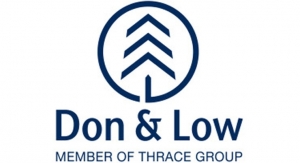12.10.20
According to a report from The Freedonia Group, medical nonwovens demand spiked 12% in 2020 from 2019 levels. Despite the near-term demand surge, growth in the medical nonwovens market is expected to return to normal levels beyond 2020 as vaccination becomes widely available and demand for PPE and disinfecting wipes plummets.
Through 2024, U.S. demand for medical and other types of nonwovens is forecast to rise 2.6% per year to $8.6 billion. Nonwovens demand is driven by the outlook for the products that are made using these materials, which themselves are influenced by macroeconomic factors, consumer preferences, and business trends.
The Covid-19 pandemic has pushed the nonwovens industry to rapidly adapt to both the high demand for crucial end-use products and the limitations of stay-at-home orders and a recession economy:
As such, nonwovens used to manufacture products primarily used in commercial settings like offices and retail stores are expected to see prolonged reductions in demand.
Medical Nonwovens is now available from The Freedonia Group. This study covers the United States nonwovens industry, defined to include materials made from fibers, filaments, and films, which are arranged into webs, batts, or sheets, then bonded together using mechanical, thermal, or chemical means.
Nonwovens are categorized by the web formation process used to produce the material: spunmelt (spunbonded and meltblown), carded, wetlaid and airlaid.
Historical data for 2009, 2014, and 2019 and forecasts to 2024 and 2029 are provided for nonwovens production (total) and demand (by web formation process and by market) in current dollars (which are not adjusted to account for inflation). Total demand is also shown in square meters and in metric tons.
Through 2024, U.S. demand for medical and other types of nonwovens is forecast to rise 2.6% per year to $8.6 billion. Nonwovens demand is driven by the outlook for the products that are made using these materials, which themselves are influenced by macroeconomic factors, consumer preferences, and business trends.
The Covid-19 pandemic has pushed the nonwovens industry to rapidly adapt to both the high demand for crucial end-use products and the limitations of stay-at-home orders and a recession economy:
- Face masks, other PPE, and disinfecting wipes have seen unprecedented spikes in demand, pushing suppliers of nonwovens to invest in new capacity and shift production lines to meet end user needs (and avoid reoccurrences of the shortages seen at the pandemic's onset).
- Stay-at-home orders in the second quarter of 2020 shuttered "nonessential" businesses around the country, effectively stopping demand for nonwovens in industries like automobile and furniture manufacturing. Even as the economy reopened, consumers remained wary and limited spending.
As such, nonwovens used to manufacture products primarily used in commercial settings like offices and retail stores are expected to see prolonged reductions in demand.
Medical Nonwovens is now available from The Freedonia Group. This study covers the United States nonwovens industry, defined to include materials made from fibers, filaments, and films, which are arranged into webs, batts, or sheets, then bonded together using mechanical, thermal, or chemical means.
Nonwovens are categorized by the web formation process used to produce the material: spunmelt (spunbonded and meltblown), carded, wetlaid and airlaid.
Historical data for 2009, 2014, and 2019 and forecasts to 2024 and 2029 are provided for nonwovens production (total) and demand (by web formation process and by market) in current dollars (which are not adjusted to account for inflation). Total demand is also shown in square meters and in metric tons.








